Elements of Adventure
Activity Catalog
Elements of Adventure
Activity Catalog
Veteran mountain guide and psychologist Matt Walker has taught us that with a little self-reflection, you can deepen your connection with nature and with yourself. You’ll find all of his tips about mindfulness and how to make the most of your next adventure collected here.
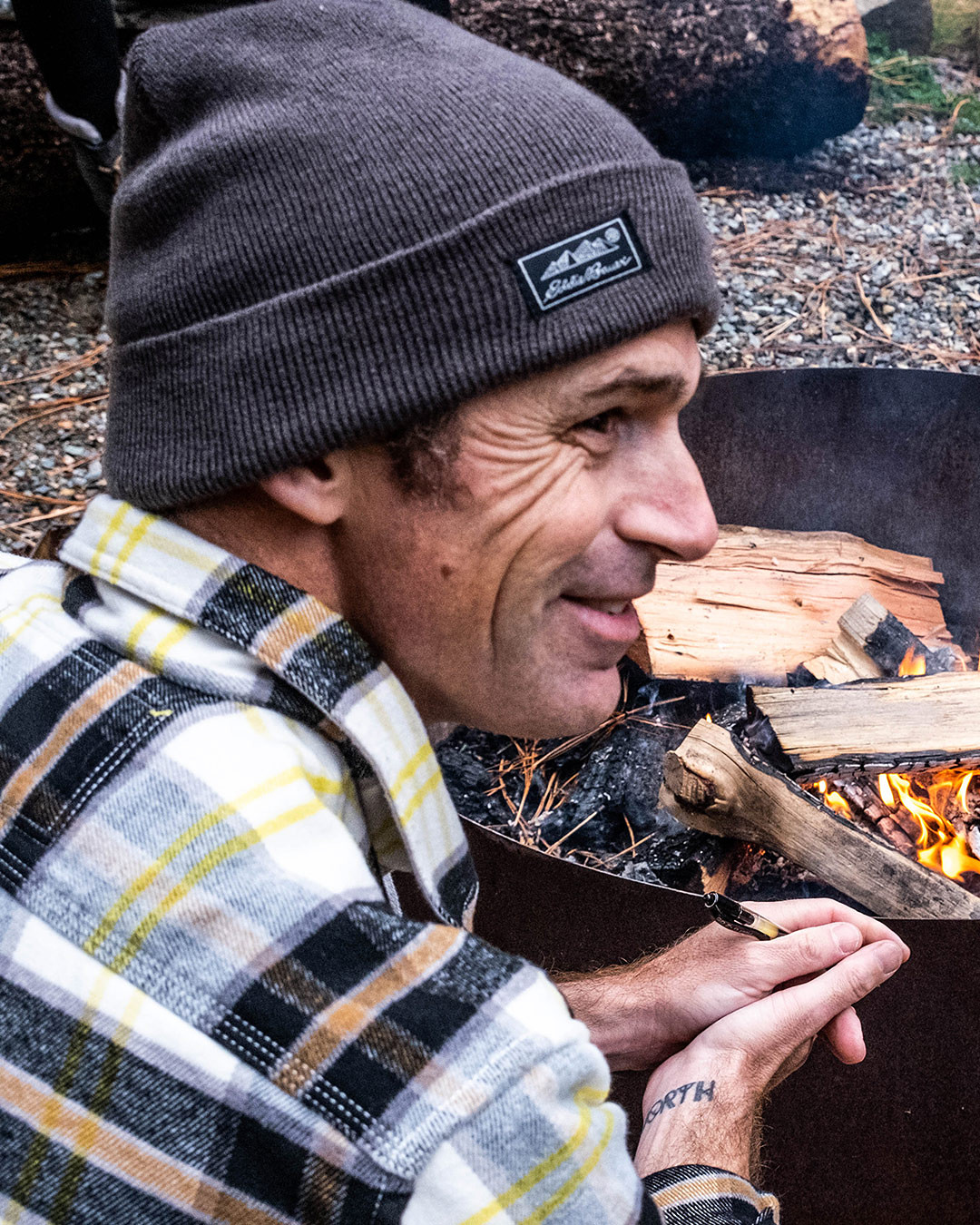
Take Time To “Do Nothing” This Holiday Season
By Matt Walker
The space between Thanksgiving and New Year’s is busy. Being busy can be good: gatherings with friends and family, traditions that ground you to a sense of place and community, and creating memories with those closest to us. And…being busy can be challenging: giving of ourselves to others’ schedules or agendas for the sake of obligation and expectation, over-indulgence, and not enough time for healthy sleep, fitness or play, or personal recharge time. It’s a beautiful time of year that has challenges as well. Like all things in life, we can hold space for both. As we close out the year, I want to share one of my most personal practices: the Do Nothing Practice.
This practice has had significant impact on my own ability to create adventure experiences in my life and for my family. From this practice, I have launched expeditions, planned mountain adventures for my kiddos, and made significant decisions that have shifted the direction of my life. I hope that it offers you space for reflection and creates an opportunity for curiosity and exploration.
The beauty of the Do Nothing Practice is that it allows you to experience the gratitude, reflection, and joy of this season while also holding space for you to recharge, reset, and recenter. It does both. The only thing it asks of you? Set aside some time, turn off the digital, and do nothing.
Sound simple? It’s definitely simple, but it’s definitely not easy.
Step 1: Set aside three hours on your calendar. Three hours. No less. No more.
Step 2: Determine where you will do your Do Nothing practice. It’s best done by yourself and in your own space. If that isn’t an option, I’m a father…I get it, use a separate room with a door that closes – a bedroom works well. My location of choice – the couch in the living room.
Step 3: Turn off all digital. No phone, no TV, no scrolling. You may want to let those closest to you know ahead of time that you will be unavailable during this time. They’ll survive without you. I promise.
Step 4: Gather a couple of things for yourself: a journal, a pen, a book you’ve wanted to read, art supplies for doodling, you get the idea. These are items for personal reflection – we aren’t talking about major projects that need completion. I’d also recommend putting the laptop in the other room. It’s a time thief and would love to sabotage your experience! Pro Tip: Grab an extra blanket and a couple of extra pillows.
Step 5: Go to the bathroom, grab a snack, a glass of water or cup of tea, and then head to your spot. Set a timer for three hours with a gentle alarm sound – nothing jarring.
Step 6: Sit on the couch, or the bed, and…do nothing. Literally, do nothing.
Sit. Wait. Allow your body to first transition to nothingness. Find a comfortable position, then allow your mind to transition to nothingness. You have carved out this time. Those that need to know, know. You are now in the three-hour womb of ‘Nothing’.
Step 7: Do not get up, leave the space, or gather other items to ‘do’ something. Your job is explicitly to ‘do nothing’.
You may find that a nap is the next best thing. Or maybe opening your journal and writing down all of the to-dos and reminders is the next best thing (it could help you clear your mind so that you can relax). Or possibly, you may reflect on the year, those closest to you, and how you want to share gratitude.
This is your time, your three hours, and aside from the ‘do nothing’ rule – there are no rules.
Step 8: Notice your relationship with ‘doing nothing’. Can you dive right in? Are you resistant? Are you ninety minutes in and tempted to call it good? Maybe you feel that you’ve checked this box and now you have other things to do and better uses of your time. You don’t. This is your recovery time and it is vital to your well-being and ability to show up for yourself and others.
Step 9: As the three hours end, your timer will let you know, and I encourage you to slowly emerge. Rise, stretch, and take a long shower. Change clothes. Come back to the ‘doing’ world rested, recharged, and with a serenity you can only experience with the gift of doing nothing.
November
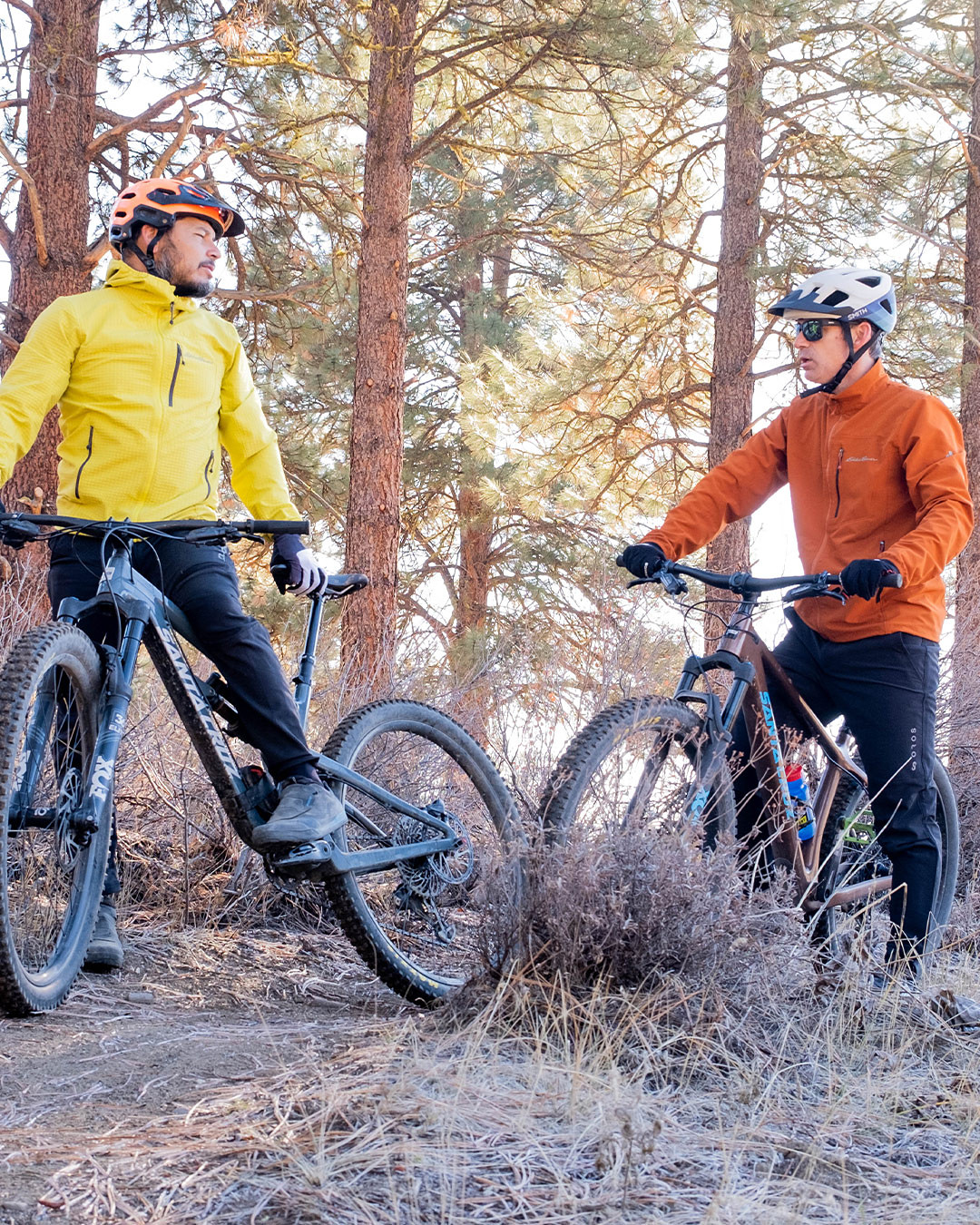
Mindfulness & Gratitude
By Matt Walker
A fast and challenging single-track mountain bike descent. The crux moves of a rock climb with wild and disorienting exposure. Climbing a windy ridge line trail in the driving rain. The sunrise on a still lake as loons fly overhead. Each of these experiences involuntarily creates an experience of mindfulness. The focus, novelty, and environment bring your attention directly to the moment. It’s as if time stands still. Each detail is clear and there are no distractions. Everything hinges on that moment – there is no future, no past. It is a powerful state of being.
Mindfulness is the practice of focusing our attention on the present moment, without judgement, and with an awareness of our feelings, our thoughts, and the physical state of our body.
Experiencing mindfulness seems simple. But like anything else that appears simple and elegant on the surface – it isn’t as straightforward as it appears.
While there are multiple challenges in practicing mindfulness, one of the most significant is to actually remember to practice it! Our brains are experts in the art of distraction. Staying present and focused on the moment is not something we are accustomed to. One of the best hacks we can employ to engage mindfulness in our lives and to cultivate the practice is to create intentional and unique experiences to highlight the moment. This kind of intentionality sets the stage for bringing your awareness into the present moment.
As we move closer to the end of the year, I encourage you to practice a unique application of mindfulness. Create an opportunity to share your gratitude in your relationships with others.
We continue to emerge from the isolation, disorientation, and uncertainty of the past two years and we have a unique opportunity – to engage in gratitude and share our appreciation directly and explicitly with those that have supported us over the past two years.
Be intentional with this experience. Invite a close friend on a hike, share a sunrise coffee together, go on a Sunday afternoon bike ride, one last camping trip before winter settles in, or if they are far away – send a text with a photo from a previous trip. Even better, follow that up with an idea for your next outing. Whatever it is, create an opportunity to be in nature together, share your appreciation for them directly, and be intentional with your time.
Share your gratitude directly. Take the risk. Speak that which is assumed, but not stated specifically. Our time on this planet together is finite and precious. May we each have the opportunity to share our gratitude with those that support us, adventure with us, and with whom we share the ups, downs, and gorgeous sunsets.
October
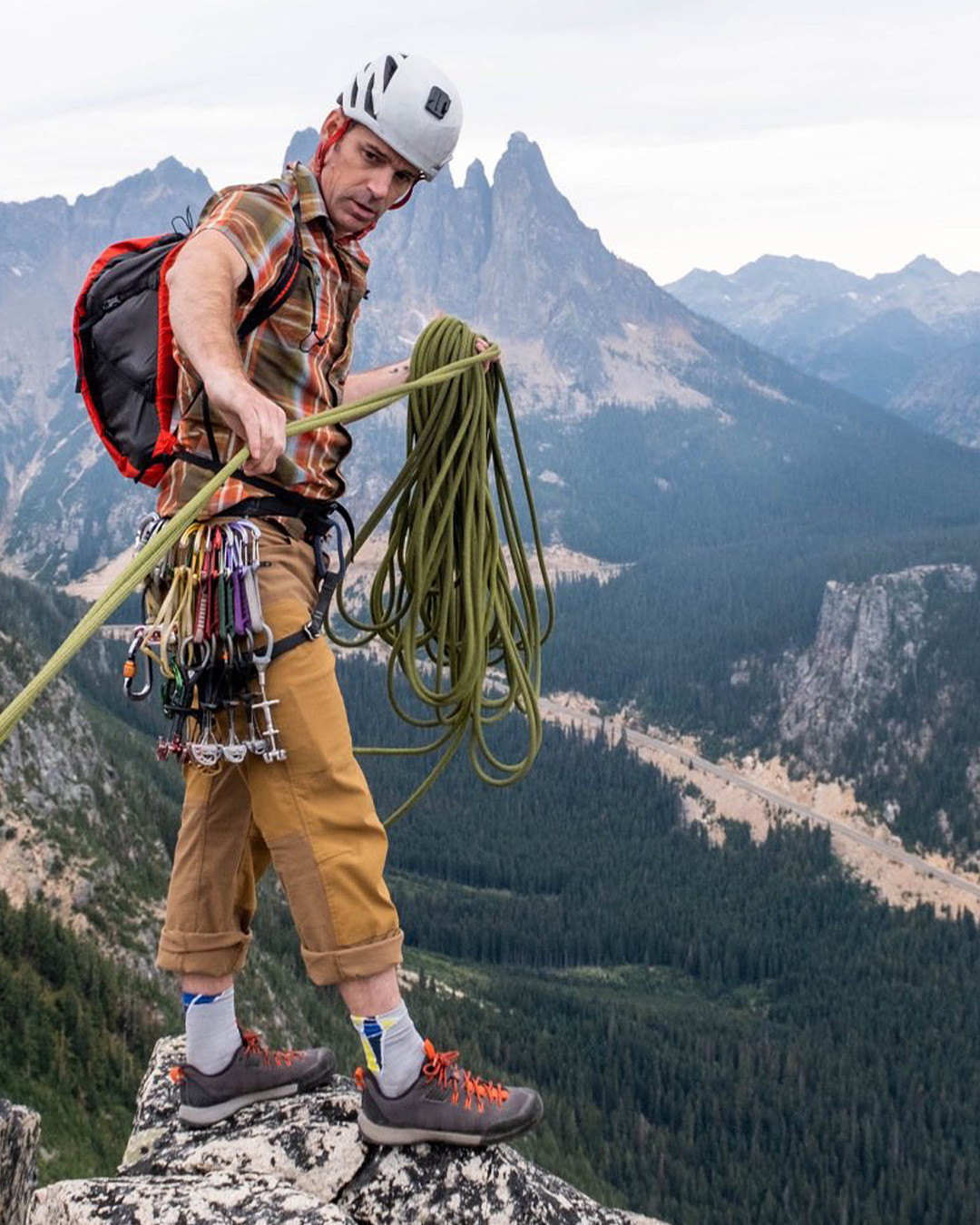
Autumn Reset
The days are becoming shorter. The air crisper. I feel a little lighter in the morning. I have a bit more energy. Maybe it’s the awareness that the seasons are shifting and that days like this are a finite resource.
Autumn is a time like no other. Cool mornings, warms days, leaves ablaze, school in session, the comfort of warm soup and fresh bread, dramatic storms, and it’s end-capped with Halloween.
It’s a dynamic time. Summer fades and Winter teases.
Autumn offers both energies – the playful, carefree, and timeless feel of summer and the slow, purposeful, and reflective pace of winter.
And while it may sound paradoxical, given our collective affinity for New Year’s resolutions, Autumn is the ideal time to reflect, reset, and set your direction for the coming year.
For this practice, take three days, set 30 minutes aside for each day, and give this a try. Bonus points if you do it with a friend or family member – you may be surprised to learn their perspective, plus, a little accountability never hurts!
Reflect
Grab a journal, a couple of pieces of paper, or whatever works as long as you go analog.
Create three pages: Gratitude / What Worked, Challenges / What I Wish Went Differently, and Memories. In whatever way you want, fill in these pages: stream of conscious writing, lists, bullet points, incomplete sentences – it’s your reflection and your practice. No hard and fast rules here.
Next: head outside for 30 minutes. It doesn’t matter where – a park, a favorite hike, the beach, your backyard, a balcony, just take in some fresh air. Widen your vision beyond a screen, unplug, and reflect.
Reset
No journaling or writing needed here. Just you in nature and in motion. Begin by looking over your lists from yesterday. Note what it feels like: hopeful, full of possibility, grateful, sad, heavy? Again, it’s your list, your experience, and your choice as to how to frame the past year.
After reading the list, take a moment, close your eyes, and breathe into the list…a series of full inhales and deep full exhales. Really feel the list – you don’t need to do anything more, no solution is needed, no tasking, nothing.
Head outside and move – on a bike, on foot, canoe or kayak, whatever brings you joy and, just as importantly, whatever brings you into a state without thought. This is why the practice is held outside. Find yourself in a space that engages all of your senses and brings you into your body and out of your head, no thinking, no ruminating on the past or the future, just present in the moment.
Set Your Direction
The final step in this practice is to clarify your direction. I hesitate to use the word: intention. This is a specific choice on my part – intentionality is only one part of the equation.
Here is the equation: an understanding of past patterns (reflection) + desired future outcome (goal setting / habit change) + intentionality (your values aligned with clarity and purpose).
With this equation available, let’s go back to your journal or blank pages and work with the unknown variables. What would you like to create? Literally. This is the map for the next year and you are the cartographer – you fill in the gaps.
Begin with a short synopsis of your experience with the reflection exercise – narrow it down to one or two sentences that encapsulate the feeling.
Next, what would you like to experience or shift in the upcoming year – the more specific the better. Hyper-specific if possible. Be bold and go big. And. Be bold and go small. Make choices that resonate for you. Small wins and small shifts. Big wins and big shifts.
The final outcome is a one-sentence declaration of how you will take on the challenges of the coming year. It’s going to take gumption, a little bit of risk, and some courage.
The Covid-era has gifted us all with a strong dose of resilience in all areas of our lives. At times it’s been a bitter pill, and other times it’s given us joyful moments of clarity: seeing what matters most to you, your family, and your community.
Your direction is in service to that – what matters most. The elegance will come in the simplicity of it all – strip it down to its bare essence.
My directionality this coming year: make choices that serve the physical, emotional, and spiritual health of those that are the most important to me, including myself. I also have a bucket list of experiences and adventures I would like to make happen, again, with those that are most important to me, as well as solo.
Here’s to a new year and new direction…in October!
September
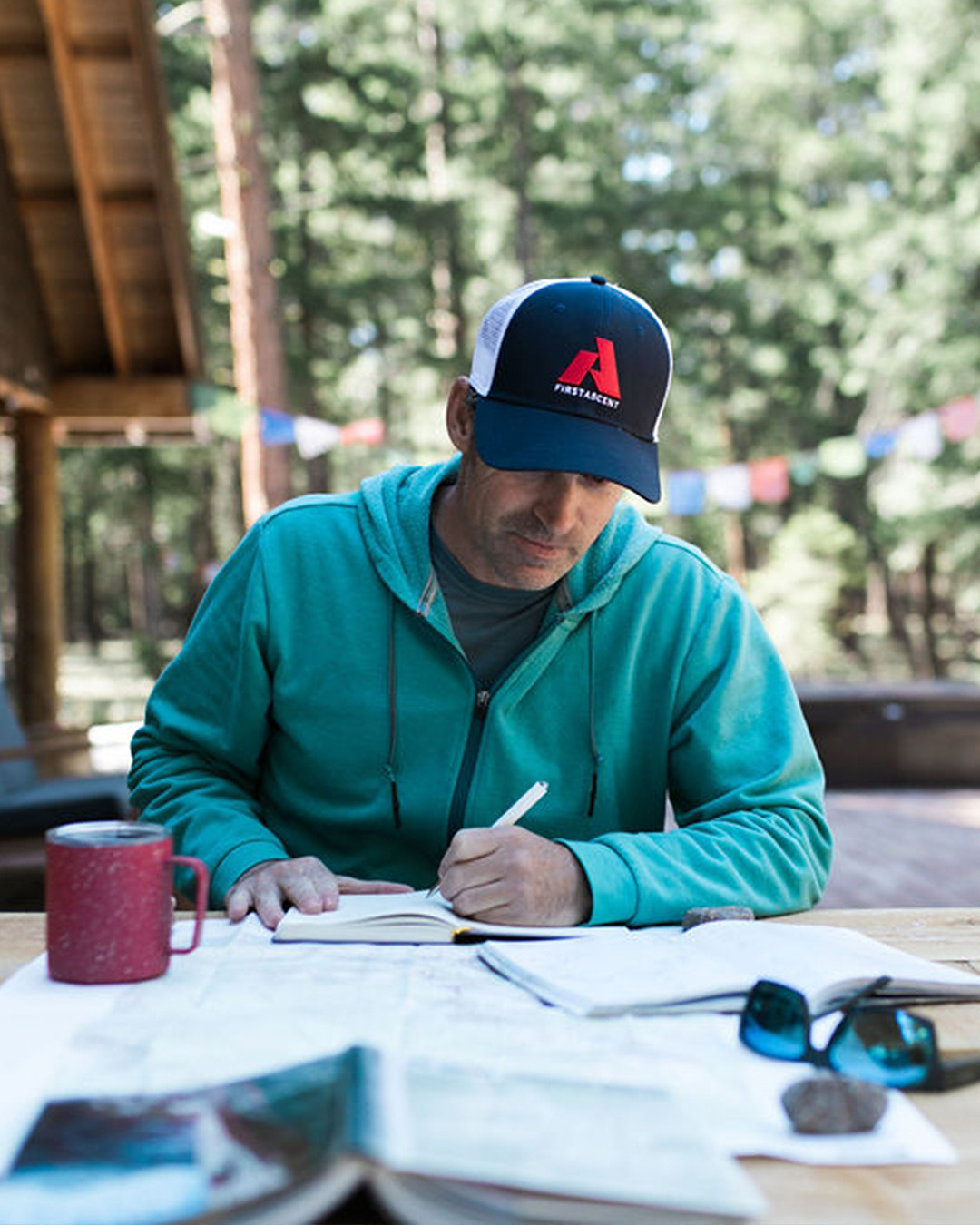
Routines & Journaling
Journaling. The word can evoke a feeling of peace, calm, thoughts of beautiful penmanship, poetic reflections, and the musings of a philosopher.
Thomas Jefferson. Marie Curie. Anne Frank. Lewis and Clark. Marco Polo. Leonardo Davinci. Thomas Edison. Winston Churchill. Frida Kahlo. Che Guavara. Henry David Thoreau. The list of individuals that kept journals goes on and on and it is astounding to have a glimpse into the genius, creativity, and daily lives of such iconic and influential people.
But, my journaling looks nothing like theirs. At all. It’s a dumpster fire of unreadable chicken scratch, ranting, emotional outburst and thoughts that don’t connect or tie together. These writings are not a memoir nor are they a reflective exercise to share my perspective with others or the world. They are brain dump written without restraint, uncensored, and brutal in their delivery.
And…those same journals can be an opening, a place of renewal, offering clarity, a chance to reflect and create opportunity as well as a new way of living – open to adventure.
I work with two journals. One that holds reflections and future possibilities – the depth journal. And one that is my ‘everyday carry’ – that holds the to-do lists, random thoughts, and details I don’t want to forget (or rely on my memory to hold,which it usually doesn’t!).
They both have their place.
The slow mornings around the campfire, down jacket on, coffee, and the world slowly waking – those mornings are perfect for the depth journal. Creating space to reflect, write without judgment, and consider what’s next, what I want to accomplish in relationships, as a father, and in my work. It’s the slow, deliberate pause, the intentional moment to stop and examine. These moments start as a few minutes and can creep slowly and easily into a half-hour and longer.
The everyday carry notebook, the one that’s in my pocket or the lid of my pack, is the living extension of my brain that allows me to dump thoughts or reminders so that I can be present in the moment. It’s the external hard drive so that I don’t have to hold it all. It’s a gift, really, to then be present in the experience and with those around me.
I encourage you to release all expectations as to how a journal should be. It’s yours to create, yours to use, and yours to define. There are no hard and fast rules. Use it daily, once a week, only while camping or on a hike. No rules, No right way. No wrong way. Just blank pages to be filled with whatever your mind creates.
Consider these opportunities for journaling:
• Over coffee in the quiet morning before the world wakes up and the demands of the day begin.
• Mid-morning after the initial out the door push is complete and you contemplate the next part of the day.
• Once a week – Sunday evening as the week wraps and a new week begins.
• With another person – take some time together to sit, write, share your perspective, and connect with another.
Some possibilities for getting off the blank page:
• Take a series of full breaths: what do you feel physically and emotionally? Start from this place and simply describe your experience as you settle in.
• Brain dump: dump all of the thoughts, the to-do’s, the pieces not complete. Use the opportunity to literally let go of all of the information you are holding.
• One please, one thank you, and one wow. Write one thing you would like to see happen, one thing you are grateful for, and one “wow” you experience in the world.
These are your blank pages and yours to create as you wish, let them be a place for clearing the noise from your mind, creating space for new possibilities, and planning your next adventures. See you out there!
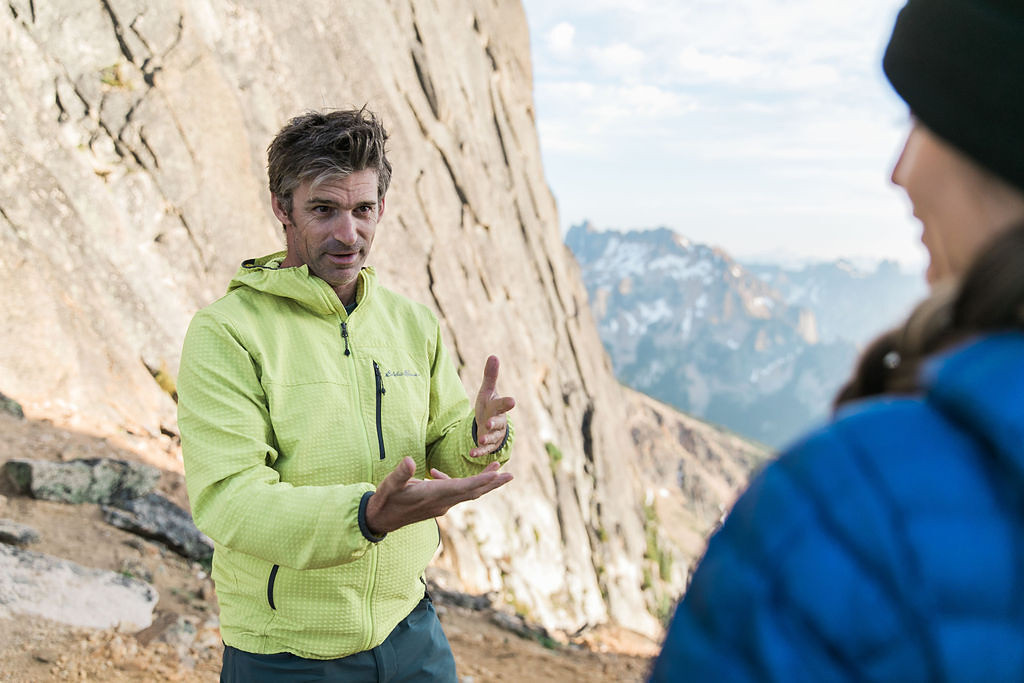
Finding Your Flow
By Matt Walker
Standing on an edge of rock the width of a nickel, 1,500 feet off the ground deep in the Yukon[1] Territory and in one of the most remote points on the planet, the wind blows from all directions and I shiver from the hint of snow in the air. The weather is shutting down and we are exposed. I take a deep breath, relax my shoulders, and move my foot to an edge of rock the width of a dime. Patient, focused, and present, I continue to climb. The next step requires calm determination. I confirm that my climbing protection is set as safely and effectively as possible. A fall here would be serious, but not fatal. I exhale, repeat a simple mantra, release doubt, and begin a series of increasingly difficult and unprotected movements upward.
This moment flows in slow motion and with exacting detail. I breathe, move, and stay present until security and safety is attained. I arrive at the ledge, calm, with even, full breath, and with all of my senses heightened. This is flow.
The prominent psychologist Mihály Csíkszentmihályi coined flow as a state of complete immersion in an activity, in which a loss of reflective consciousness occurs. To put it simply, you are so immersed in an experience that you no longer question yourself, critique yourself, or are aware of comparison.
It’s a pretty amazing space to be in, and we all have moments there. But can we cultivate the flow state so that we can experience it more often in our lives?
The answer is yes.
And for many of us, time in nature, adventuring, and exploring creates an opportunity to hyper focus, be present, and fully engaged. It primes us for being in the flow state.
This is my work in the world, as a psychologist and mountain guide. I assist individuals in experiencing this state with intention and purpose. And the question I receive most frequently is: How do I replicate this experience in other parts of my life?
Herein lies the opportunity – we create moments of flow in nature so that we can enrich and deepen our own daily lives as well as the lives of those around us.
There’s a moment we all encounter in every high endeavor we engage in. Perhaps it’s during a work project that feels audacious, a difficult conversation with a loved one, acknowledging a change that needs to occur in our personal life, sharing a vulnerability with another, training for an adventure that challenges us and invokes a fear of failure or the feeling of being overwhelmed. The details of the situation change and aren’t the point. The point is that there is a moment when we engage in something that has deep meaning for us, in which we have to choose: do or do not. Commit or retreat. Just like the moves made high above the final piece of protection – a choice point.
This process isn’t actually so binary: it’s not an either/or scenario. There is a gray area here, but if the answer isn’t full engagement, then it falls in the “No” category (even if No means a period of pause, rest, recovery, or reassessment). We still have to choose: flow state or pause.
Consider: Would you benefit from more flow state experiences now? What steps can you take to create them? Or would you benefit from more time in reflection, pausing, and practicing bringing flow into other areas of your life. What would shift if you brought that level of presence, commitment, and grace forward?
#LiveYourAdventure isn’t just a hashtag or slogan – it’s a way of being. Adventure as a way of existing – embodied in the flow state and present throughout our lives.
Do you have questions about creating a flow state in nature or applying the experience of flow in other areas of your life? Reach out to Matt via Instagram at @mattwalkeradventure
August
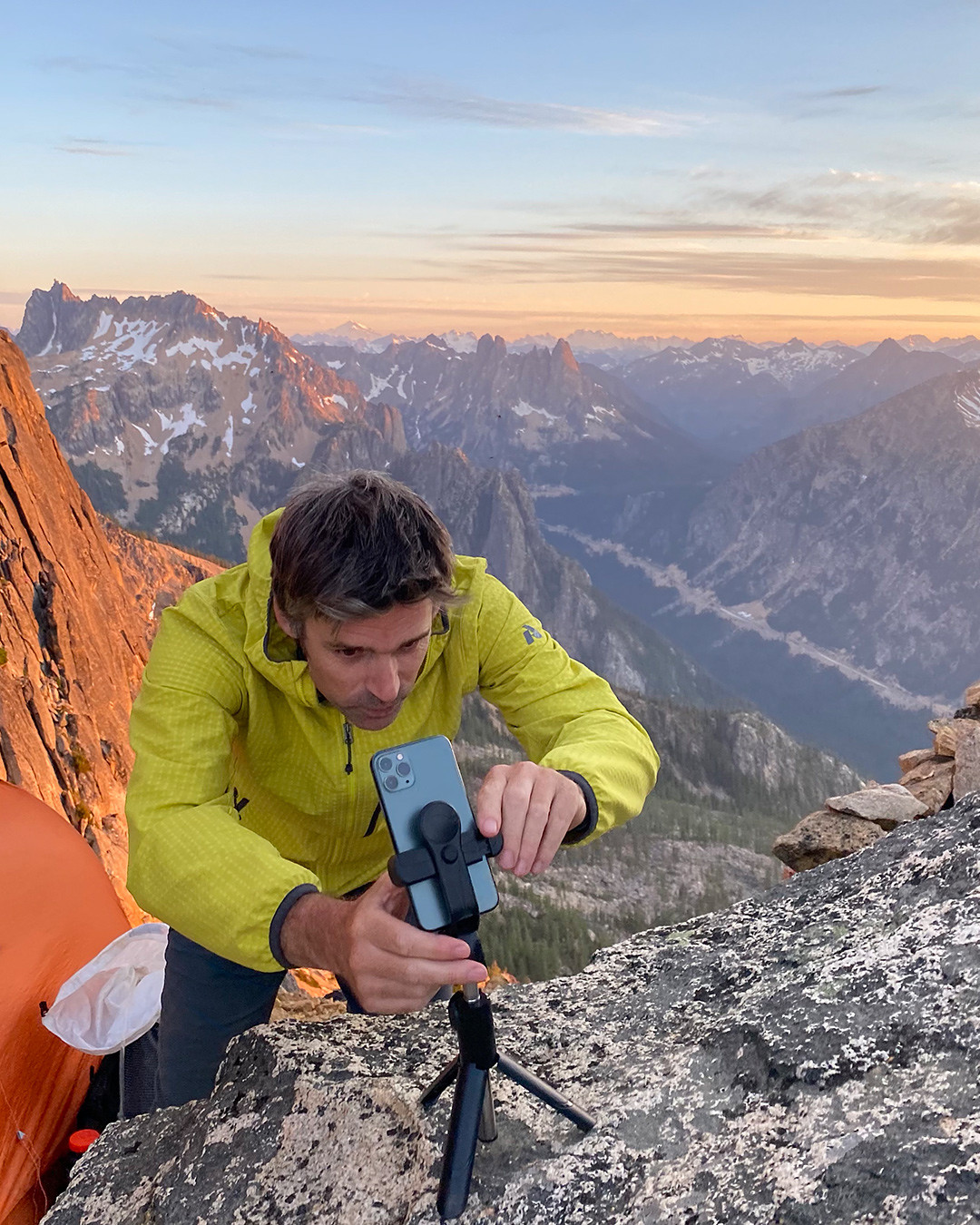
Photographing The Night Sky
Matt Walker in collaboration with EB contributor & photographer Scott Kranz
After countless pre-dawn starts to climb mountains all over the world, one night stands out above all the others. The night before, I had supported a rescue of an injured climber at 23,000 feet. We descended to 13,000 feet to conclude the rescue and I returned solo back to 23,000 feet immediately thereafter – traveling light, without shelter or sleeping bag, only a down suit to wear if necessary.
That night became the singular most powerful night of my life.
I didn’t make it back to high camp. Instead, exhausted and knowing I needed to preserve energy for the upcoming summit climb, I stopped to sleep. I laid down in my down suit with my legs tucked into my pack for warmth, hugged myself in the sub-freezing temperatures and stared at the stars. In awe at the expanse, our galaxy lay in front of me unobstructed, and in the inevitability of feeling my miniscule presence in the ever-expanding depth of the universe, I couldn’t sleep. I felt the weight of the moment – small, alone on the mountain, in awe, and vulnerable to the elements.
This is the experience I continue to seek in the night sky: in the mountains, around the campfire with friends and family, or with my camera as I learn and experiment with astrophotography to capture the beauty of the night.
Astrophotography intimidated me. At first, glance the images of the night sky, with radiant colors of the Milky Way and the Northern Lights or perfectly measured star trails over a dramatic landscape seemed next level, and frankly, nearly impossible for my skill set.
But there’s a whole spectrum of possibility and we each have to begin at the same place – the beginning. The place where learning is raw, clumsy, awkward, and uncertain. The same place that asks us to be open to possibility, vulnerable as we struggle to grasp concepts and create less-than-perfect pieces of work – the beginner’s mind.
I was encouraged by a close friend to approach astrophotography with humility and with a willingness to get it wrong. The result? I get it wrong – a lot.
I’ve discovered a unique and engaging way to create art in the wilderness. I take in the night sky and appreciate being outside after the crowds have dispersed and returned home, and connect with that feeling of awe and immense depth of awareness that can only come from pausing to take in the universe.
On one end of the spectrum, astrophotography includes the use of telescopes, intricate post-editing technique, and high-end gear. The other end of the spectrum is scrapy – a smartphone, a tripod, the native camera app or night-specific app and a willingness to experiment.
We’re going to focus on the scrappy side.
You need these 8 things to get started with astrophotography:
• Capture Device: Smartphone – explore the night setting capture mode on your device. On the iPhone 11 and 12, the “Night mode” feature will automatically become available in low-light environments (the mode is “on” when the moon icon turns yellow), and you can even adjust the exposure time to suit the darkness of your environment.
• Tripod: any device that can keep your phone or camera steady, still, and directed at the night sky. A traditional tripod or stand with a phone mount works great, otherwise look out for a solid and secure surface for your phone to rest on. In any event, use your phone’s self-timer (e.g., 3 seconds) to avoid any shake from tapping the shutter button.
•A view of the night sky – preferred with as much darkness as possible. The darkest night skies tend to be away from city light pollution, but find an accessible and comfortable spot wherever you can see the stars!
• Clear weather – the clearer the better. Needless to say, overcast or cloud-filled skies will make stargazing difficult, if not impossible, so check your local weather forecast beforehand.
• Low moon illumination – research the moon phase and timing of moonrise, I use the Lumos app [SK1] to track this. The PhotoPills app is also very popular for researching sun and moon positioning in map and AR.
• Download the NightCap app for more creative control – this app will kick-start your experience with a series of automated settings for capturing stars, star trails, and more.
• Compose with Imagination – frame a tree, a lake, a tent with lights, you name it – be playful. If you use an artificial light to brighten a subject in your foreground, and if the light is too bright, you can use your favorite Eddie Bauer Multidana or Multiclava to cover the light and “diffuse” it, so as to create more even lighting in relation to the stars.
• Take a test shot and check the sharpness of the stars captured in your shot! If the stars are blurry, you can try tapping the background on your screen to manually reset your focus, aiming for the sharpest stars that your device/phone can capture!
• A willingness to try and try again...and again after that. Fail forward.
“There is one thing the photograph must contain, the humanity of the moment.” - Robert Frank
This exercise in capturing the night sky offers us a unique opportunity; the nexus of humanity, nature, and the universe – all in a moment of pause and awe in the outdoors.
Join me and the Eddie Bauer community, on August 7 for the second annual Sleep Under the Stars Night. And this year August 7 coincides perfectly with the opportunity to dip your toes into astrophotography. The moon will have a 1% illumination as it is in the smallest crescent phase. Not ideal for dancing under the moonlight...but perfect for night sky photos. Perfect conditions to grab your smartphone, set up a tripod with friends, family, and kiddos, and see what you can create!
June
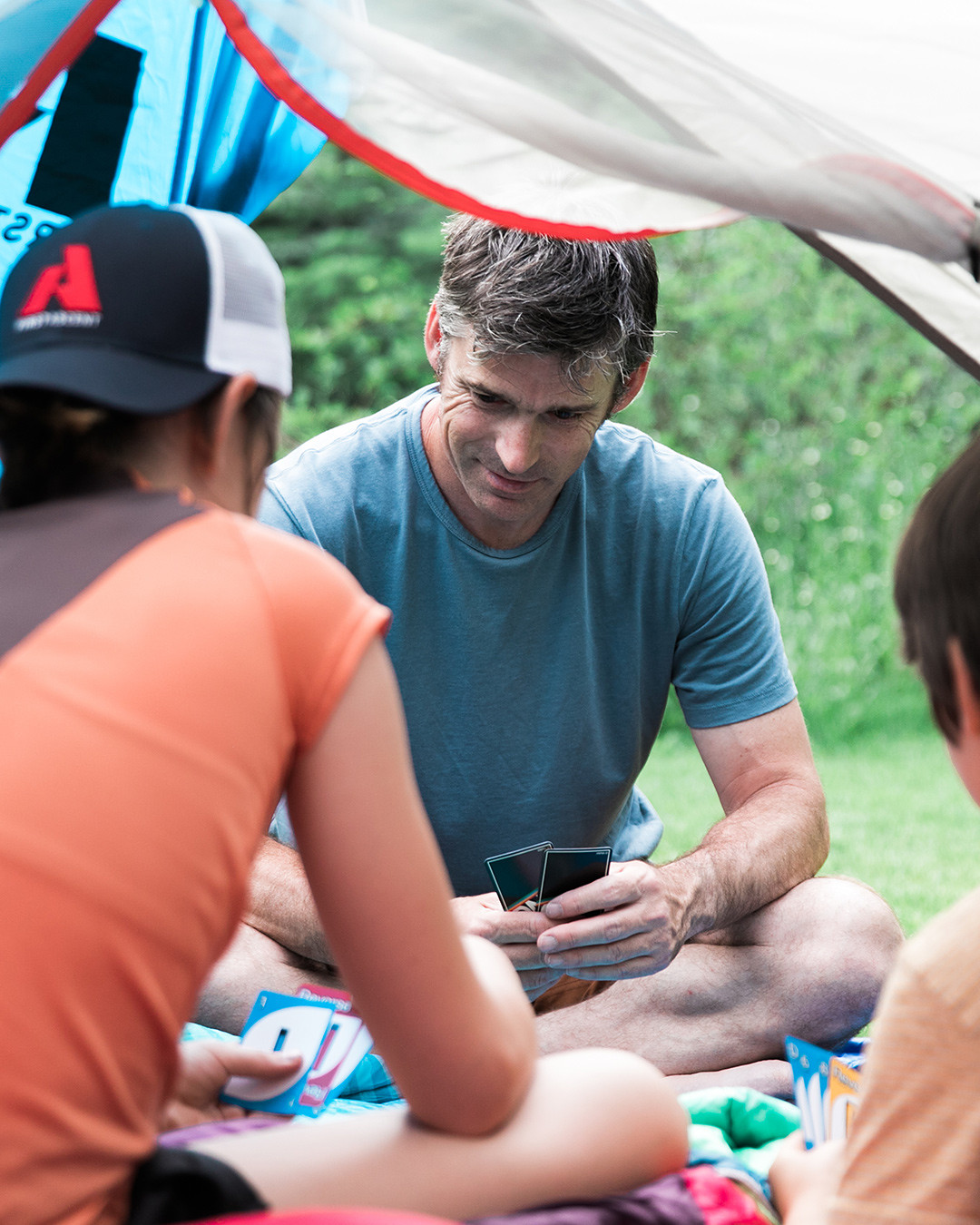
Adventure Planning with Kids
By Matt Walker
One of my greatest joys is sharing the outdoors with my children. Kids can show unfiltered enthusiasm and excitement for the unknown, the challenges, and the adventure. When a new tent arrived last week, they wanted to unpack it, set-it up themselves (I noticed they didn’t look at the directions - just dove right in!), and sleep in it that night in the backyard - and they did!
And…one of my biggest challenges as a parent is in sharing the outdoors with my children. While the experience is deeply rewarding, it can be a significant challenge to plan, prepare, and execute an adventure while holding space for uncertainty, setting them up for success, and managing the whole scene.
Regardless of the length of trip, level of difficulty, and environment, guiding children on an outdoor adventure demands massive quantities of patience, the ability to be aware of the needs of all participants, and vision. Not to mention a solid sense of humor!
Here are a few steps I take to create a win-win experience for my family:
Everyone is Involved
I approach each outing as a complete experience: a beginning, middle and end. When everyone knows the entirety of the adventure, then we can relax into it, be playful, have fun, and bring our curiosity. The anxiety and uncertainty dissipates and everyone can be present. It’s so much better!
One way to do this together is to make all the general details clear and invite everyone to have a role and be actively involved, regardless of age of skill.
Dial in the details: where are you going, how long will it take to drive to the trailhead, what is the weather forecast, how long is the hike, how much elevation gain and loss, what are the landmarks along the way, what is the objective, is it an out and back hike or a loop, consider all of the unique travel details, write them out, and talk about it.
Make it a family meeting (that’s fun) with maps, photos, and the opportunity for everyone to weigh-in with their excitement, concerns, and questions. Being in the know and having input makes all the difference – everyone feels part of the team.
The family adventure meeting is also the time to get additional buy-in by creating roles for everyone – snack management, break and hike timer, photographer, etc. Be creative and playful!
Pack Smart
Set yourself up for success: pack right and the trip will unfold with ease. Be sure everyone has the right gear for the environment and any potential weather issues. Don’t forget the environmental challenges that can make or break a trip: bug spray, sunscreen, and a first aid kit.
Additionally, be aware of the duration of your trip and everyone’s need for snacks and water. No reason to create an experience of unnecessary suffering out there!
I like to up the ante a little bit as well and create opportunity for surprises, especially for the little ones. This sometimes includes gummy bear hunts while on break, sneaking a few of their favorite small figurine toys in my pack and then hiding them on the trail (stop for a wildlife sighting and “find” the toy), you get the idea – be creative and create memories.
Set the Pace
Set the pace that matches the sweet spot between being a drill sergeant on a mission and a wanderer without a care in the world. Somewhere between these two, is the tone and pace your family will need to have success while keeping smiles and awe at the forefront. Each family is different and each day is unique.
As the parent and trip leader, the most significant challenge may be finding the balance between destination mindset, noticing the details and wandering pace. Be aware of the need to continually balance your agenda and the reality of the situation, and the opportunity to see from their level – sometimes literally!
Plan, Enjoy, and Reset During Breaks
Breaks can be the full reset experience we all need while on the trail. I tend to lean towards a model of 30 minutes on and 10 minutes off – give or take a bit depending on the possibility of taking breaks at vistas, next to water, or at the top of a big hill. Using this model allows everyone to fall into pace, know they will be moving for a bit while also having the security to know there is a break coming up, snacks, and playtime.
I treat breaks as the reset time as well – bathroom stops, changing layers, adjusting gear, etc. When everyone knows that travel time is for travel and break time is for personal needs, this keeps the train moving efficiently and break times are then the opportunity to stop and address personal needs and play. Travel time is travel time – break time is break time.
Celebrate
I like to set-up a post-adventure celebration. This can be cold drinks by the river afterward (hint: pack the cooler ahead of time so treats are waiting upon your return), a family dinner at a fun spot everyone enjoys, an ice cream stop on the way home...whatever works for your crew, but the emphasis is on celebration!
Praise is big here. Mark the challenges, note the confidence or determination they had in meeting difficulties, share your favorite moment and the time you felt was the most difficult (it’s good to mark both and let everyone share the experience). I like to ask: what was your favorite part of the trail? It’s an open ended question and the answers can be fun and interesting: I loved the fairy garden we passed next to the giant roots, or the section when we could look down at the river, or the view at the top...an open ended question lets the kiddos lead and share their experience.
Another reason to celebrate and shift into the positive experiences? You can tee up the next question, when there are smiles, and good memories - so, where should we go for our next adventure?
May
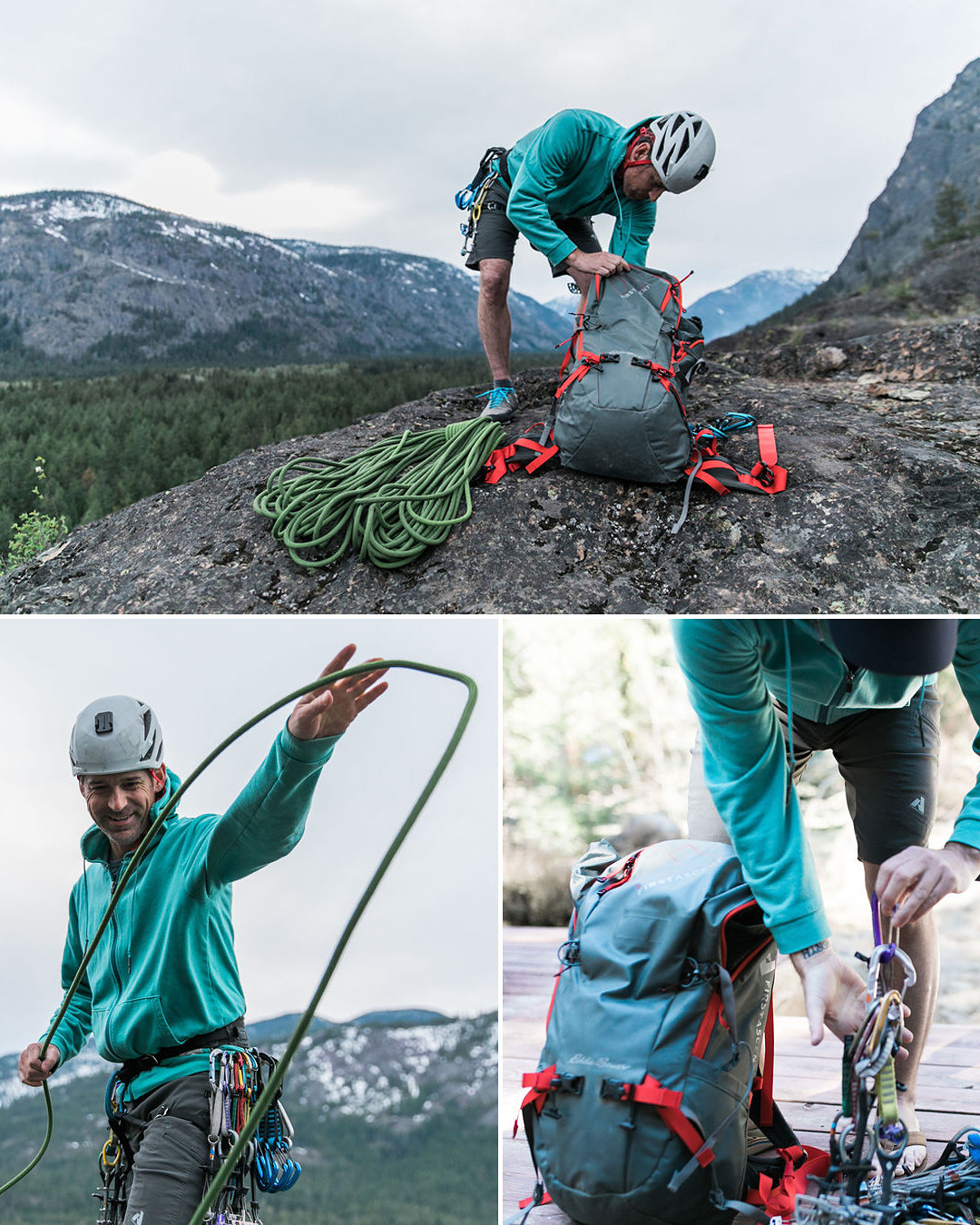
Planning Adventures with Intention
The Essentials Checklist
Are you the organizing type? Or do you feel like planning isn’t really your thing? Maybe it’s something your partner normally does and when they aren’t along on the trip, you forget to bring the good snacks or to charge your headlamp.
Our daily lives are full and we juggle so much that sometimes by the time the weekend rolls around, it’s all anyone can do to rally and create an adventure that rejuvenates, and inspires us. Add a healthy dose of Covid-fatigue to the mix and…it can be challenging to remove the barriers and get out sometimes.
As a mountain guide, I live by trip planning. It doesn’t matter if it’s a month-long Himalayan expedition, a three-day ascent of Mt. Rainier, or a family car camp overnight at the lake – using the same system of planning sets me up for success. There are so many steps that go into creating an experience of minimalism and elegance in the wilderness, and if you skip the planning, trust me, your trip will suffer. Pouring over maps, measuring distance and time from point A to B, punching numbers on meal preparation and readying your gear are worth the prep-trip time. It makes all the difference.
Some of us love planning and some of us thrive on moving through the world with no agenda – but there is a delicate balance between being open to the spontaneity of adventure and adhering to a schedule in order to reach your goals. Each is necessary and we need to be able hold on to both of them at the same time. Therein lies the art of adventure – a thoughtfully crafted plan that’s open to the uncertainty of the experience.
Here are some of my tried-and-true tips to start mindfully planning for your next adventure:
• Minimize distractions. When you begin mapping your adventure plan, clear the table, the desk, the kitchen counter, or wherever you’re working, so that you can focus on the task at hand. Clean slate = clear mind.
• List it out. Write down each step of your adventure and the potential obstacles you anticipate. Think about what gear you might require for safety and success and create an essentials check list.
• Be accountable. Bring your check list with you and refer back to it when packing your gear and embarking on your adventure.
• Repeat. Make planning a habit by setting aside time to list out what you need before each new adventure.
Over the next few months, we will help hone your planning skills with intention setting for different outdoor activities. Think of it as the starting point for your adventure - an opportunity to plan, create, and ease into the gear and equipment preparation experience and create more time for all involved from the kitchen table to the summit.
April
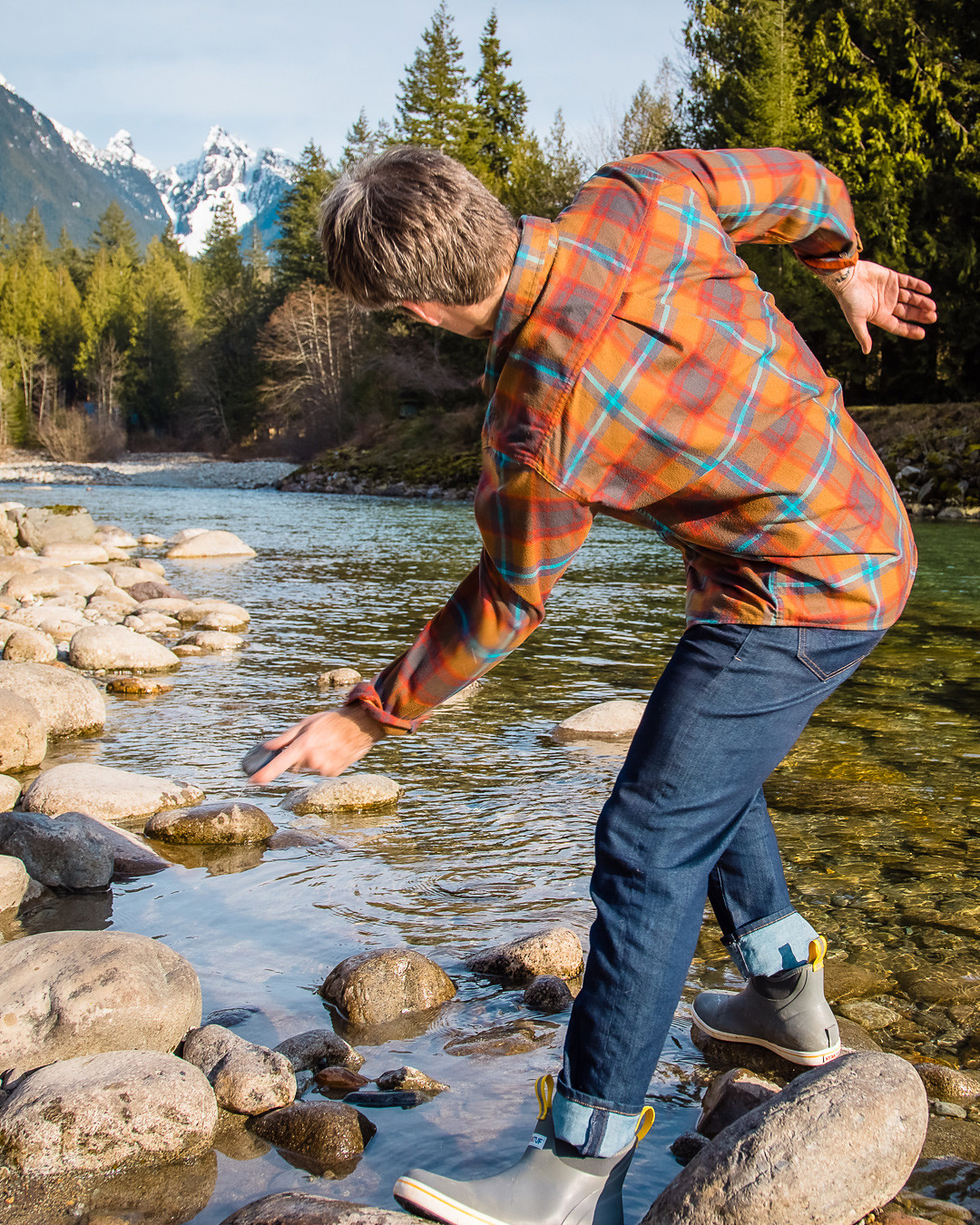
Learning How to Reset
Building your mindfulness skillset
It’s safe to say that pandemic life has been a rollercoaster. I have found myself cranky, irritable, restless, anxious, and have had difficulty concentrating.
I’ve discovered that one of the easiest ways to bust a bad mood is to get outside and be active. Moving my body increases my heart rate, helps me breathe deeper, and shifts my perspective by changing my surroundings. After spending time outdoors, I feel like a completely different person. I feel lighter, I can think more clearly, and my world is more vibrant.
Why? What happens when we spend time outdoors?
The evidence is clear that spending consistent time in nature improves your outlooks, mood, and sense of physical wellbeing.
How much time is enough?
Recent research points to 20 - 30 minutes, three days a week, as the easiest way to reset your perspective.
How can you begin incorporating mindfulness resets into your busy schedule?
We challenge you to block off three 20-minute intervals on your calendar for the next two weeks. Treat these times as committed appointments and we will provide a community of support to help you stay committed.
Let’s do this experiment together – tag yourself using #EBElementsOfAdventure and let’s see how we can collectively shift our moods and benefit from finding ourselves outside.
March
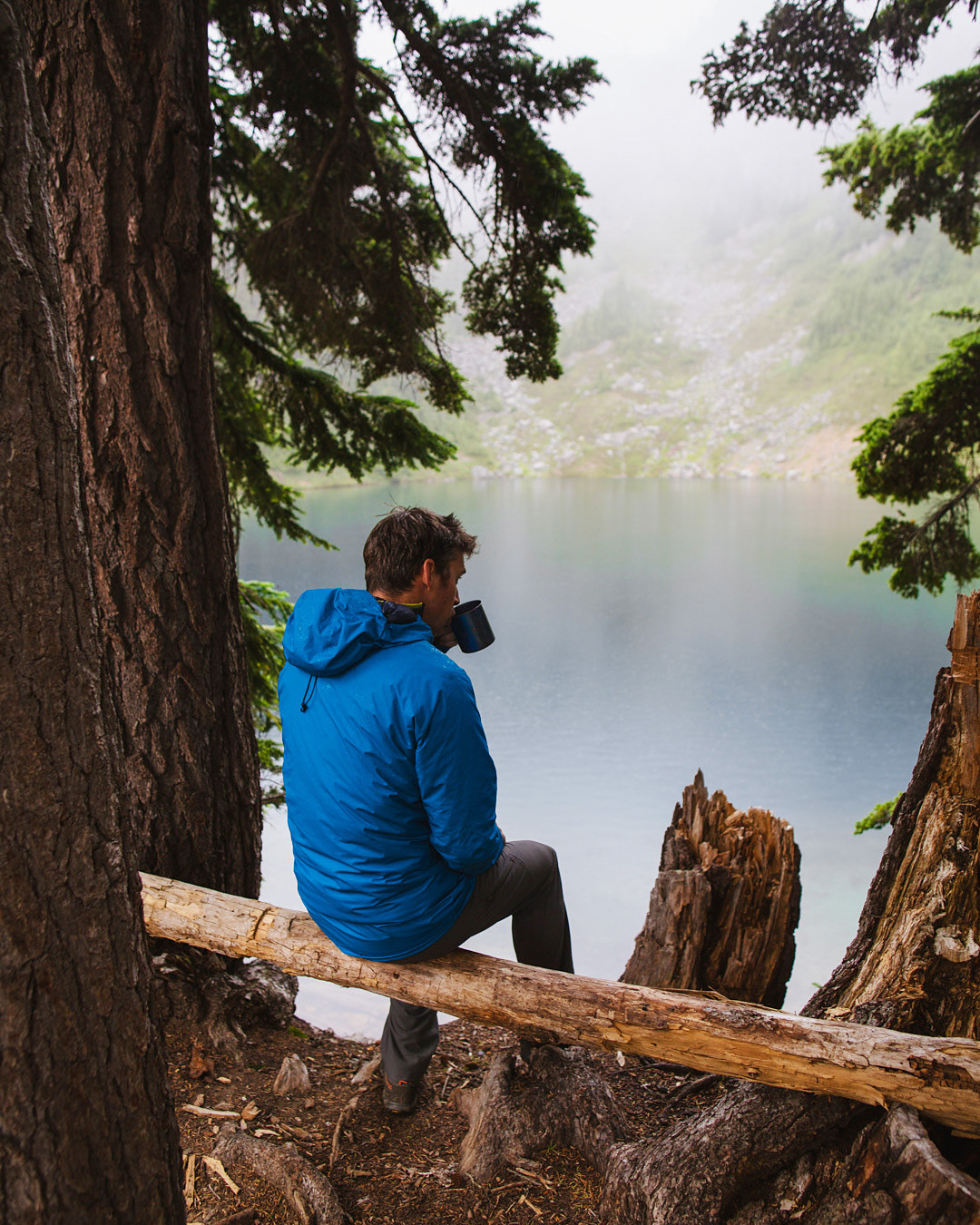
Disconnect From Technology – Reconnect With Nature
It’s a simple idea: turn off your phone and unplug from technology so you can be fully present on your next adventure.
Simple? Yes. Easy? No.
Our phones connect us to the world, but also disconnect us from the present moment. Handheld devices have endless possible distractions, and while cell phones are sometimes necessary for safety they can keep us from having immersive experiences in the outdoors.
There is no app that can replace quality time adventuring in nature either solo or with our friends and family. When we put our phones away we have more freedom to truly see all the wonderful things going on around us - to pause and be present.
We love the challenge of a long climb, the peace and serenity of standing on a summit, the beauty of shadows shifting in a canyon, and the lush vibrancy of a verdant forest.
The energy we spend staring at a screen leaves less time to appreciate and observe these aspects of an adventure. Without worrying about taking pictures or checking-in, we give ourselves the opportunity to become more aware of our surroundings. You can see more, hear more, notice more, and really connect with nature and your own sense of well-being.
Here are some tips to practice the habit of disconnecting and create more peace and mindfulness in your adventures:
• Use airplane mode if you feel comfortable and put your phone in the lid of your backpack instead of your pocket. (Or, look into alternate GPS, tracking, and safety devices that eliminate the need to use your phone.)
• Use a paper map instead of an app.
• Bring a small digital camera instead of relying on your phone for pictures.
• Does everyone in your group need their phone? Try limiting the number of devices you bring along and reserve them for photos, map apps, and emergencies.
February
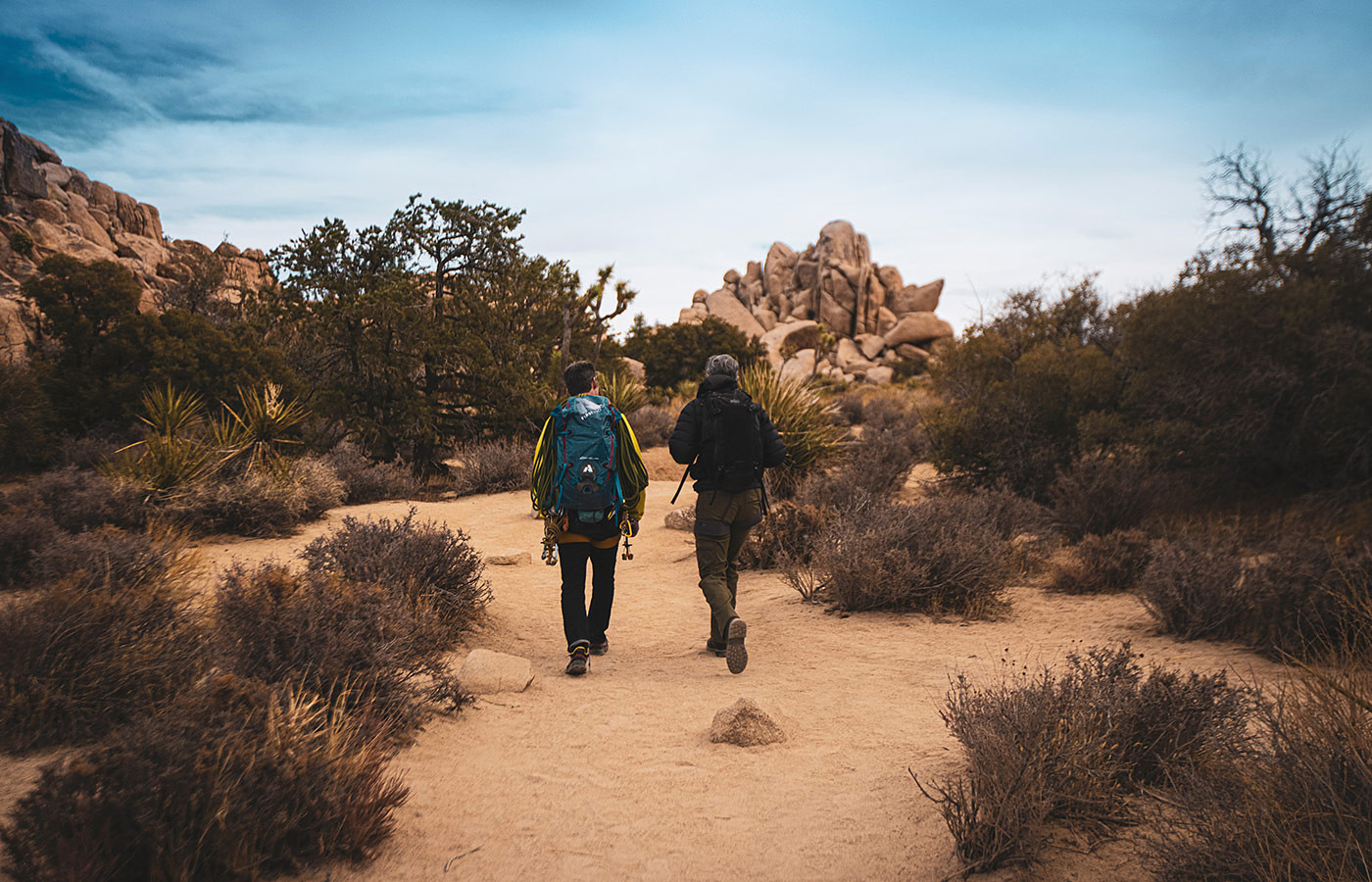
Finding Adventure In Your Own Backyard
Our daily experiences have become very localized over the past year, but there are still ways to find new adventures in our everyday lives.
Going on a local adventure is a great way to show some love to neighborhood spots and still switch up your routine.
A backyard adventure is a short excursion to a familiar location, but with a new perspective. It creates an opportunity to reimagine the possibilities of adventure and find new ways to play, explore, and connect with nature and yourself.
Your backyard adventure might take place on a local trail, in your neighborhood, or in your literal backyard. How can you change up your routine to find new adventures?
Here’s a list of ideas to inspire you next time you’re wanting to switch things up:
• Park at a different trailhead than you normally would and explore
• Go for a run or walk in the opposite direction than you normally would
• Bring your phone and challenge your hiking partner to a nature photo contest
• Bring a journal, find a place to sit, and write for 20 minutes describing everything your senses experience
• Grab a sketchbook and some colored pencils and draw what you see
• Walk an hour to run an errand that would usually take you 10 minutes by car
January
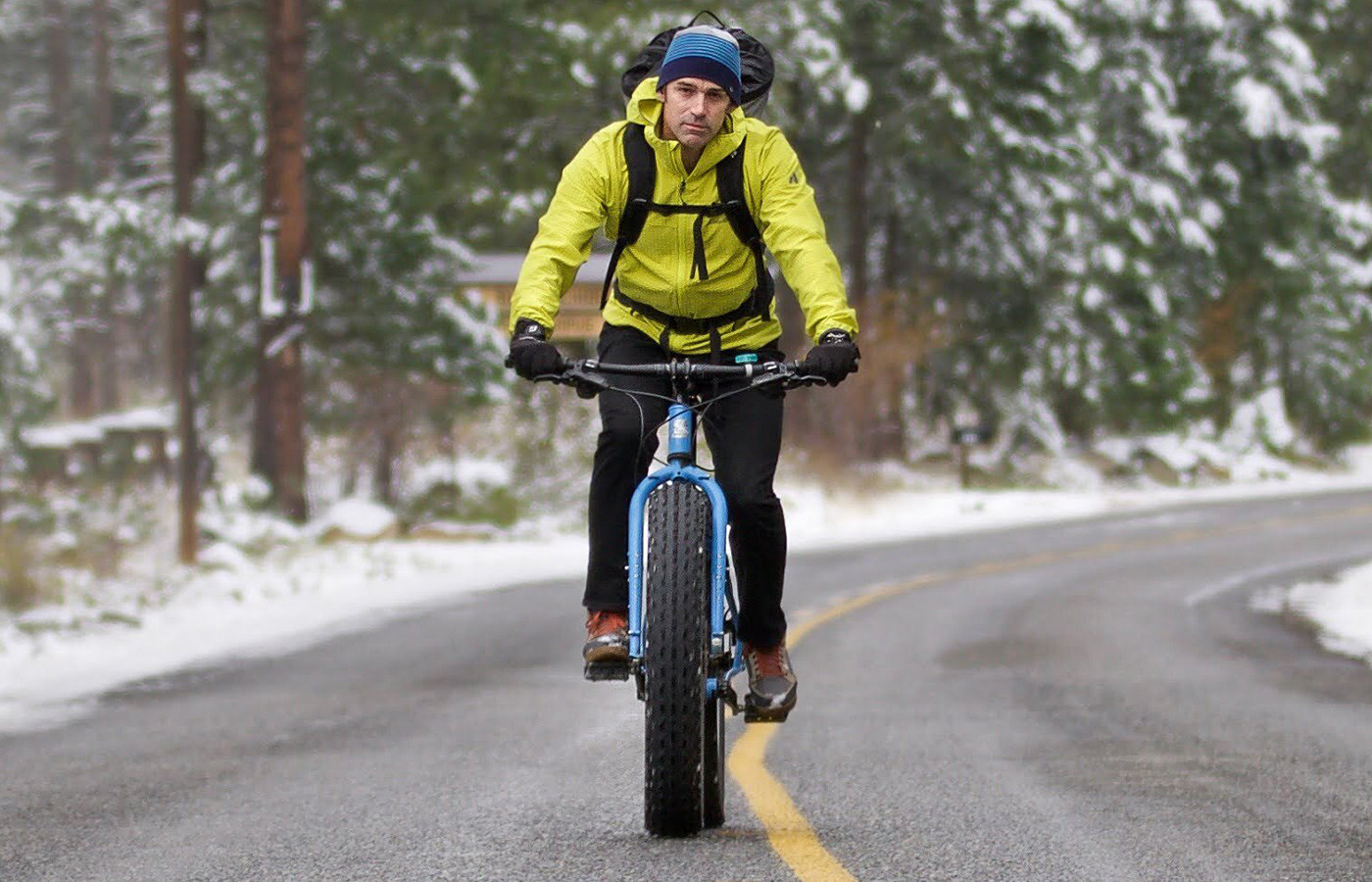
Elements of Adventure
By Matt Walker
Matt is a veteran mountain guide and psychologist who has taught us that with a little self-reflection, you can deepen your connection with nature and with yourself. Every month we’ll be sharing Matt’s tips about mindfulness and how to make the most of your next adventure.
Adventure. Does the word conjure up towering Himalayan summits or polar expeditions? These experiences can certainly be exciting, but we believe there are endless kinds of adventures.
Matt Walker, one of our EB Field Experts, believes you can use a few key elements to find adventure in your everyday life:
Challenge – Our goals are where our values and actions align – the sweet spot where we are fully present both physically and emotionally. These challenges allow us the opportunity to learn & grow.
Uncertain outcome – Uncertainty is the element that keeps us engaged, flexible, and aware, bringing forth creativity & innovation!
Community – People define our experiences, and even solo journeys don’t come about without a web of connections and interactions.
Finding significance in everyday adventures can help drive purpose and provide structure.
Consider an important goal or experience you have planned for 2021, and then ask yourself which of these elements comes to mind? And how can you use it as you move toward that goal?
With everything going on in our world today, it can be very inspiring to discover a deeper understanding and awareness as you #FindYourselfOutside











